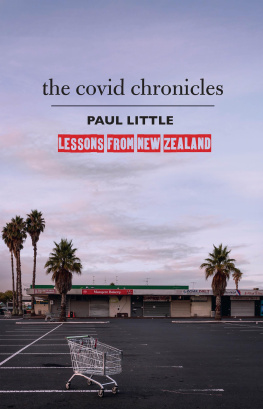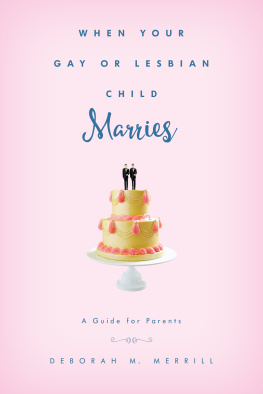
First published in 2015
Copyright Paul Little
www.paullittlebooks.co.nz
A catalogue record for this book is available from the National Library of New Zealand.
ISBN 978-0-473-32494-0
All rights reserved. No part of this book may be reproduced or transmitted in any form or by any means, electronic or mechanical, including photocopying, recording or by any information storage and retrieval system without prior permission in writing from the publisher.
Paul Little Books
PO Box 78-361
Grey Lynn Auckland
Phone (64) 021 372 880
Email
Designed by Katy Yiakmis
Photographs courtesy Lawson family collections.
Printed in China through Asia Pacific Offset Limited
On behalf of their children, this book is dedicated with love to the memories of Ann and Sam Lawson.
Contents
PART ONE
The nations darlings
CHAPTER 1
Its quads!
DEAREST MUM, WROTE ANN LAWSON to her mother, Hilda Menzies, in the USA, Well, here I am at last with news, no doubt, that you will at first feel startled about, and then very happy just as I was. As you know the doctors have told me that I was definitely carrying more than one baby. Well, that was no exaggeration as they have now found out that I am carrying four babies. Quadruplets. It is so wonderful that I cannot believe it.
Ann, her mother and the doctors were all in for a surprise, especially when the babies finally arrived a few months later. But there was nothing surprising about Anns excited reaction to the news.
All I want, Mum, is to marry and have kids, the young Ann Menzies had told her mother repeatedly from a very early age. It was a wish that would be more than amply fulfilled.
If you had to describe the ideal woman to face the challenges of being mother to quintuplets, the result would be Shirley-Ann Lawson, known to all as Ann.
She had everything it took: she was patient, nurturing, resilient, tireless and brave; she was provided with reserves of stamina and blessed with an abundance of maternal instinct.
Her future husband, Sam Lawson, was 16 when his father died. Sam left school early to go to work at Aucklands Crown Lynn potteries. Growing up at a time when a males role was to be the provider for his family, he was firmly focused on making money from a young age.
But for a time he thought he might find fame to go with his fortune. He got some fancy photos taken and moved to the US to become a movie star. That didnt work out. He soon ran out of money and with no green card was unable to work. He went to the immigration authorities who confirmed the ban but in a move that showed the determination that would be a hallmark, he staged an impromptu sit in until they relented and he was able to work in odd jobs long enough to make his way back home.
Where he renewed an acquaintance with Ann Menzies, who, she told her daughter Leeann years later, thought he was a bit of an idiot. He was such a skite, she said, turning up at parties in cowboy boots and hat and newly acquired American accent. Fortunately, the affectations didnt last long.
Sam wasnt the only one who thought his face could be his fortune. Ann had done some modelling in her teens and won the title of Piha Surf Queen in a beauty contest.
When Ann married Sam in 1959. She was 21 and he was two years older. People married young in the 1960s, especially if they were already expecting a child, which the couple were.
They were both working at Crown Lynn. Ann was an artist painting designs on plates, vases and the dozens of other items turned out by the plant. Sam worked on the chemical side, developing mixtures and material, including plimortar a mortar plasticiser a product to which that company had the rights.
Even then the ambitious young man supplemented his income with an early morning bread delivery run.
Plimortar became the foundation of his own business when he left Crown Lynn. When he finally set up in business, the timing was perfect as Auckland was entering a construction boom and Sams product was ideal for the likes of large international standard hotels which were being erected.
Before then, however, he bought a fish and chip shop in Mt Roskill which he and Ann ran together.
After giving birth to daughter Leeann a healthy, strapping 4.3kg, delivered with no complications in 1960, Ann was keen to give her a little brother or sister. Sam was more diffident but willing to go along with Ann if that made her happy.
But as months stretched into years and Ann failed to conceive she was bitterly disappointed.
She had Chiari Frommel syndrome a rare condition that occasionally occurs after a pregnancy and makes a patient infertile. In Anns case it resulted from a defect of pituitary-hypothalamic function. Pituitary failure means ovulation does not occur. Many symptoms are the same as those of menopause headaches, loss of energy, depression. Sometimes, periods do not resume and milk production continues after breast feeding has ceased. In certain cases the syndrome is resolved without any intervention. Anns was not one of those cases.
But she was fortunate to find herself needing treatment when Auckland was home to some leaders in fertility research and treatment.
Initially she came to the attention of Cecilia Liggins, Aucklands first female obstetrician, who tried hormone treatment, administering doses of progesterone and oestrogen. Anns periods resumed, but ovulation did not.
She progressed up the medical hierarchy and, partly due to the ease of her first pregnancy and Leeanns good health, was deemed to be an excellent candidate for the fertility programme then being undertaken at Aucklands National Womens Hospital.
Cecilias husband, Graham Liggins, and his colleague H.K. Ibbertson supervised the treatment and later published an article in the British medical journal the Lancet titled A successful quintuplet pregnancy following treatment with human pituitary gonadotrophin [HGT]. It gives an in-depth account of Anns treatment.
Ann was fortunate in her doctors. Liggins and Ibbertson were as distinguished as it gets. The former pioneered steroid treatment that vastly improved the survival prospects of premature babies; the latter had performed remarkable work alongside Sir Edmund Hillary in Nepal, developing a treatment for goitre that reduced the high levels of cretinism among the local population.
Fertility treatment with HGT had been pioneered by a Swedish doctor, Carl Gemzell, who developed a process using human growth hormone extracted from the pituitary glands of dead bodies. His early efforts resulted in numerous multiple pregnancies with poor chances of survival.
As Liggins and Ibbertson wrote Multiple pregnancy with as many as seven foetuses is recognised as a hazard of treatment with HPG. Gemzell reported septuplets but the fate of all such pregnancies with five or more foetuses has been abortion.
The suggestion has been made that Ann was being given a mega dose of HGT as her doctors experimented on her to perfect what was then a relatively new treatment. In fact, according to Liggins and Ibbertson, The pregnancy described was the first in a series of patients treated on this regimen.
There is no suggestion that Ann did not know what treatment she was getting. Many other women were involved in fertility procedures in Auckland at the time.
According to one of her specialists, Professor Denis Bonham, head of the post-graduate school of obstetrics and gynaecology at National Womens Hospital, The dosage of the hormone was selected on the basis of overseas studies and was meticulously controlled by daily chemical hormone estimations. Experience has shown that even with such careful control the possibility of multiple pregnancies remains.
Next page














